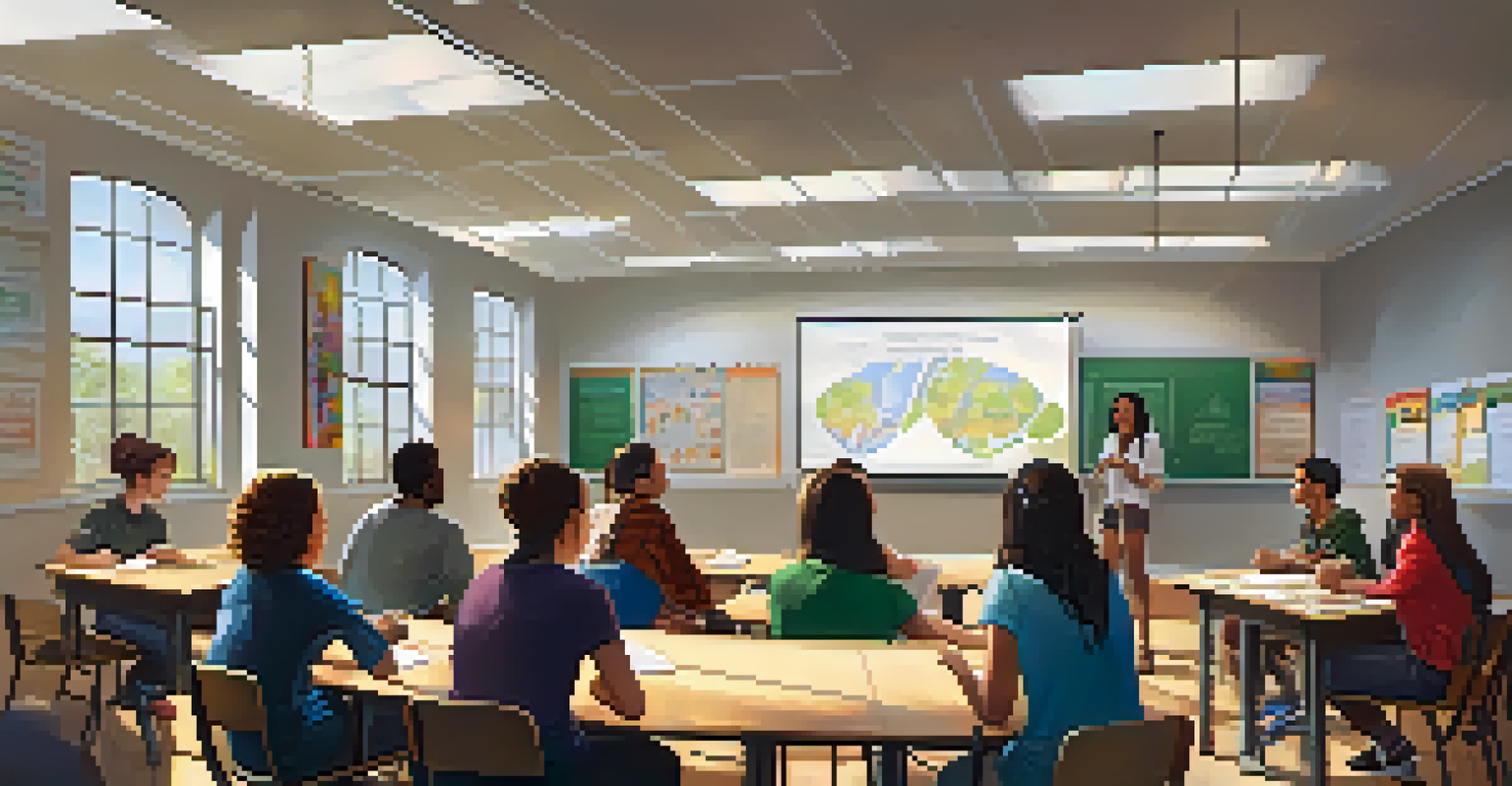Engaging Students in Civic Responsibility Through Interdisciplinary Learning

Understanding the Importance of Civic Responsibility
Civic responsibility is all about the duties and roles we have as citizens in our communities. It's not just about voting; it encompasses community service, environmental stewardship, and social justice. When students grasp the significance of these responsibilities, they are more likely to engage actively in their communities and make informed decisions.
The best way to find yourself is to lose yourself in the service of others.
By instilling civic responsibility early on, educators can cultivate a generation that values participation and engagement. This not only benefits the individual student but also strengthens the fabric of society as a whole. Students who understand their roles as citizens are more likely to contribute positively to their communities.
Moreover, civic responsibility encourages students to think critically about societal issues. They learn to ask questions, seek solutions, and advocate for change, which are essential skills in today's rapidly evolving world.
The Role of Interdisciplinary Learning
Interdisciplinary learning combines knowledge and skills from various subjects to create a richer educational experience. This approach allows students to see connections between disciplines, making learning more relevant and engaging. For instance, a project that combines history, science, and art can illuminate the impact of climate change through historical events and artistic expressions.

When students engage with multiple perspectives, they develop a holistic understanding of complex issues. This is particularly important for civic responsibility, as many societal challenges require input from various fields to solve. By breaking down traditional subject silos, educators can foster a deeper sense of inquiry and collaboration among students.
Civic Responsibility Empowers Citizens
Understanding civic responsibility encourages students to engage actively in their communities and make informed decisions.
Additionally, interdisciplinary learning encourages creativity and critical thinking. Students learn to approach problems from different angles, which is crucial for finding innovative solutions to civic issues.
Real-World Applications of Interdisciplinary Learning
One effective way to engage students in civic responsibility is through real-world projects. For example, students could work on a community gardening initiative that combines science (understanding plant biology), math (calculating space and resources), and social studies (exploring local food systems). This hands-on experience not only teaches practical skills but also highlights the importance of community involvement.
Education is the most powerful weapon which you can use to change the world.
Another example is a mock city council where students debate local issues. This activity integrates civics, communication skills, and research, allowing students to immerse themselves in the democratic process. Such experiences help students appreciate the complexities of governance and their role within it.
Through these projects, students see the tangible impact of their efforts. They learn that civic engagement is not just an abstract concept but a vital part of their lives, encouraging them to continue participating even beyond the classroom.
Fostering Collaboration Among Students
Collaboration is at the heart of both civic responsibility and interdisciplinary learning. When students work together on projects, they learn to appreciate diverse perspectives and understand the value of teamwork. This is particularly vital for tackling societal challenges that require collective action.
Group projects can take many forms, from community service initiatives to collaborative research projects. Students can engage in discussions, delegate tasks, and support one another in achieving common goals. This cooperative spirit not only enhances their learning but also mirrors the collaborative nature of civic engagement.
Interdisciplinary Learning Enhances Engagement
By integrating multiple subjects, interdisciplinary learning fosters critical thinking and creativity, essential for addressing societal challenges.
Moreover, these collaborative experiences help build essential social skills. Students learn to communicate effectively, resolve conflicts, and appreciate the contributions of others, which are all crucial aspects of being responsible citizens.
Encouraging Critical Thinking Through Debate
Debate is a powerful tool for fostering critical thinking and civic engagement. By engaging in structured discussions on current events or ethical dilemmas, students learn to articulate their thoughts and consider opposing views. This cultivates an environment where questioning and dialogue are encouraged.
Incorporating debate into the curriculum allows students to research various perspectives, enhancing their understanding of complex issues. They not only learn to defend their viewpoints but also to appreciate the nuances of different arguments, which is essential for informed citizenship.
Furthermore, debate activities can inspire students to take action. As they explore issues deeply, they may feel compelled to advocate for change, whether through community projects or advocacy campaigns.
Integrating Technology for Enhanced Engagement
In today's digital age, technology plays a crucial role in education and civic engagement. Tools like social media, blogs, and online forums can amplify students' voices and allow them to connect with broader audiences. When students share their projects or civic initiatives online, they not only raise awareness but also inspire others to get involved.
Moreover, technology can facilitate collaborative projects, enabling students to work together regardless of geographical barriers. Virtual meetings, collaborative documents, and discussion boards allow for a seamless exchange of ideas and resources.
Collaboration Builds Essential Skills
Working together on projects helps students appreciate diverse perspectives, enhancing their teamwork and communication abilities.
Additionally, using technology to research civic issues helps students develop essential digital literacy skills. They learn to discern credible sources, analyze information, and present their findings effectively, all of which are vital for responsible citizenship.
The Role of Educators in Facilitating Engagement
Educators play a pivotal role in fostering civic responsibility and interdisciplinary learning. By creating a curriculum that emphasizes real-world applications, collaboration, and critical thinking, teachers can inspire students to take an active role in their communities. Teachers who model civic engagement themselves set a powerful example for their students.
Professional development opportunities can also equip educators with the tools and strategies needed to implement interdisciplinary learning effectively. Workshops, conferences, and collaborative planning sessions can help teachers share best practices and innovative ideas.

Ultimately, teachers are not just instructors; they are mentors and guides in the journey of civic engagement. By nurturing a passion for social responsibility within their students, educators can help shape the next generation of informed and active citizens.